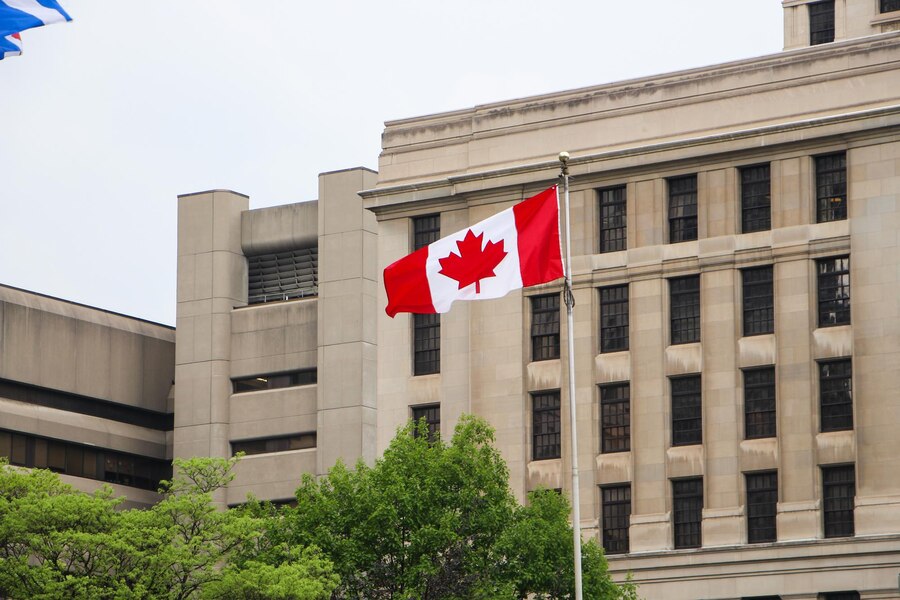Hello aspiring professionals! If you’re planning to work in Canada after graduation, there’s a significant update you should know about. The Canadian government has decided to stop accepting applications for work permits at the border following graduation. This change, effective June 21, 2024, aims to phase out what is commonly known as ‘flagpoling’. Goodbye to Flagpoling for Post-Graduation Work Permits
What is Flagpoling?
Flagpoling is a strategy that many international students and temporary residents in Canada have used to fast-track their work or study permit applications. Instead of waiting for their application to be processed online, they would leave Canada briefly (usually to the United States) and re-enter to get their permit processed immediately at the border. This approach allowed them to bypass the lengthy wait times that come with online applications. Goodbye to Flagpoling for Post-Graduation Work Permits

Why Did People Use Flagpoling?
The main reason people used flagpoling was to avoid the long processing times associated with online applications. When applying online, it can take weeks or even months to receive a permit. This delay can be a significant barrier, as applicants might not be able to work or continue their studies during this period. Flagpoling offered a quick solution, allowing students and temporary residents to continue their activities without interruption.
Why is Flagpoling Ending?
The decision to end flagpoling stems from several operational and logistical challenges it presents. Primarily, it has created significant congestion and delays at border entry points, diverting customs officers from other critical tasks.
Impact on Border Services
Flagpoling has put a considerable strain on Canadian border services. Customs officers have had to manage a high volume of individuals seeking same-day immigration services, which detracts from their ability to handle other important responsibilities, such as managing high-risk individuals and facilitating trade. To alleviate these issues, the government has reduced flagpoling hours at 12 entry points across the country, allowing officers to better manage the flow of visitors and focus on their core duties.
Impact on Post-Graduation Work Permits
Previously, international students could apply for a Post-Graduate Work Permit (PGWP) at the border immediately after graduation. With this new change, applicants must now apply for their PGWP online from within Canada. It’s important to note that your study permit remains valid for up to three months after your program ends, giving you time to apply for a PGWP without disrupting your status.
Processing Times for Temporary Permits
Understanding the processing times for temporary permits is crucial for planning your transition from student to professional in Canada:
- Study permit (outside Canada): Typically processed in 5 weeks.
- Study permit (inside Canada): Generally takes about 12 weeks.
- Work permit (outside Canada): May take up to 19 weeks.
- Work permit (inside Canada): Longer processing time of approximately 102 weeks.
These timelines highlight the importance of applying early and ensuring all required documentation is in order to avoid delays.
Government Measures to Address Changes
In response to ending flagpoling, the Canadian government has implemented several measures to streamline the application process and reduce wait times:

Faster In-Canada Processing: Efforts are underway to expedite the processing times for work permit applications submitted within Canada.
Simplified Application Process: Online application forms and processes are being simplified to facilitate easier submissions and allow applicants to continue working while awaiting a decision.
Immediate Work Authorization: Workers can now start a new job immediately upon submitting their work permit application, eliminating the need to wait for the application to be fully processed before changing employers.
Changes at Canadian Entry Points
To manage the flow of visitors more effectively, the government has reduced the hours available for flagpoling at 12 entry points across Canada. This adjustment aims to optimize border officer resources, ensuring they can focus on critical tasks such as security and trade facilitation.
Encouraging In-Canada Applications
From March 1, 2023, to February 29, 2024, about one-fifth of foreign nationals attempting to flagpole were PGWP applicants. The government is actively encouraging applicants to apply within Canada rather than resorting to flagpoling. This push includes ongoing efforts to improve processing times for various permits, making the in-Canada application process more attractive and efficient.
Conclusion: While the end of flagpoling may present initial challenges for international students and temporary residents, the Canadian government’s measures are aimed at creating a more efficient and fair application process for all. By understanding these changes and preparing your application accordingly, you can navigate smoothly through the transition from student life to a professional career in Canada. For more information contact us now.

Disclaimer
The information provided on TheVisaPoint.com is for general informational purposes only. While we strive to keep the information up to date and accurate, we make no representations or warranties of any kind, express or implied, about the completeness, accuracy, reliability, suitability, or availability with respect to the website or the information, products, services, or related graphics contained on the website for any purpose.
Source: financialexpress.com
- Canada Citizenship Requirements: Everything You Need to Know
- The Rise and Challenges of Canada’s Temporary Foreign Worker Program
- Comprehensive Guide to Canada’s Express Entry Draw Results and the Provincial Nominee Program
- How has the Canada Citizenship Scheme changed over the years?
Also read:
- UK Study Visa Approved Without IELTS – Even After a 5-Year Study Gap!
- 10 Most Budget-Friendly Countries for Indian Students to Study Abroad
- Discover the Best Time to Visit Canada: A Complete Guide for Your Dream Adventure
- Navigating Post-Study Work Opportunities & Tuition Fees: A New Era for International Students in the UK, US, Canada, and Europe
- Exciting News: Malaysia Extends Visa-Free Entry for Indian Nationals Until 2026!
 Need expert Advise ?
Need expert Advise ?
